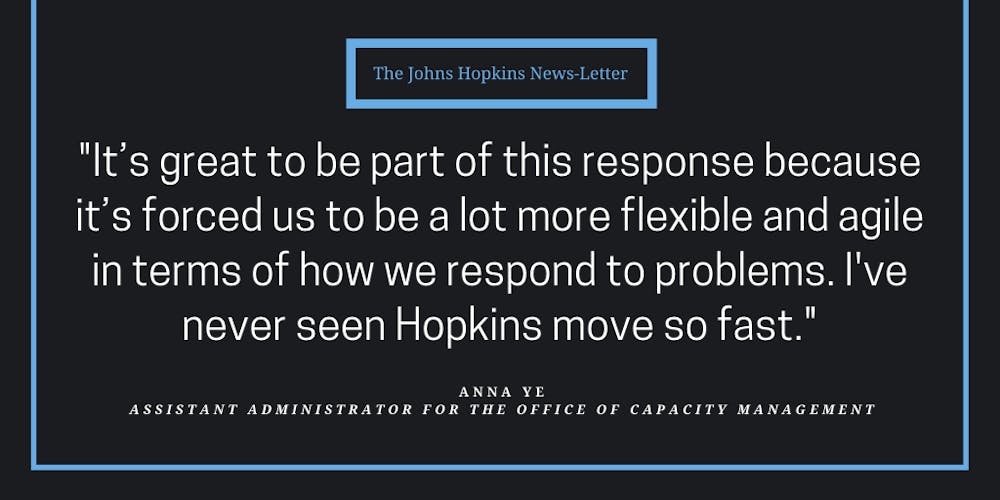The Johns Hopkins Capacity Command Center, which was originally launched in 2016, is the first of its kind within the health-care system. The command center’s visual dashboards allow for workers to analyze real-time information, such as occupancies, operating room schedules and emergency department capacitance across the entire hospital. Real-time analytics process data as soon as it comes into the database, helping users make decisions without delay.
Recently marking its fifth anniversary, the command center has achieved great success in facilitating smooth operations within hospitals in the greater Baltimore area and preventative care throughout the pandemic.
In an interview with The News-Letter, Anna Ye, the assistant administrator for the Office of Capacity Management, the oldest piece of information is three minutes old.
“We like to say we are the center of gravity for all clinical observations here within the hospital. So our main goal is to get the right patients in the right beds at the right time,” Ye said.
Getting patients into hospital beds requires coordination and communication among different groups within the center. The Hopkins Access Line provides transportation services; the Hopkins Communication Lifeline team dispatches helicopters and ambulances; and the admitting team allows successful tracking of patients’ records and progress.
Over the course of five years, two more groups were created to support the daily functioning of the command center.
The Supplemental Staffing Unit provides more staffing flexibility, and the systems engineering and analytics team uses machine learning and advanced simulation modeling to predict capacities within the next two weeks.
When COVID-19 hit, hospitals experienced an unpredictable time, facing numerous issues, such as patient-physician transmission, overflowing patients and scarcity in personal protective equipment.
Using real-time data and advanced predictive modeling, the command center has been able to inform decision making about possible virus trends and the corresponding responses in staffing and COVID-19-unit allocations.
“When COVID hit we didn’t do anything differently. Being in the command center we just did our jobs,” Ye said. “We essentially used the tool that we had built, and it greatly benefited us.”
One of the units within the center, the Hopkins Access Line, has facilitated safe transfer of all patients both internally within the Hopkins Hospital and externally to other hospitals in the Baltimore area. According to Ye, they have not seen a single case where COVID-19 was transmitted during transportation.
In an interview with The News-Letter, Dr. Rebecca Dezube, the medical director of the Hopkins Access Line, explained the achievement of the team during this special time.
“[COVID-19] definitely facilitated communication within the hospital health system and just challenged everyone,” Dezube said.
In addition to the inter-hospital connections in Maryland through coordination of patient transport, the command center also enabled intra-hospital relations, as many departmental intensive care units have been merged to make room for COVID-19-specific units.
According to Ye, the command center has planned out worst-case scenarios for all situations and thus has always had a bed for every single patient admitted.
This pandemic truly demonstrated the abilities and importance of having a command center that uses real-time analytics as part of the hospital’s daily operations.
“It’s great to be part of this response because it’s forced us to be a lot more flexible and agile in terms of how we respond to problems. Honestly, [I’ve] never seen Hopkins move so fast,” Ye said.
Looking forward, the command center has set five key pillars for the next five years, namely capacity optimization, quality and safety, productivity and equipment tracking, system management and engineering and analytics.
The overall goal is to maximize efficiency in patient throughput and clinical treatments to establish a closer connection with other health-care institutions in the greater Baltimore area and to better monitor patients’ vital signs using analytics and predicting models.
“The question, as we’re learning and evolving, is really trying to come up with predictive models of capacity and things we can do about that so that we can best take care of all the patients,” Dezube said.





